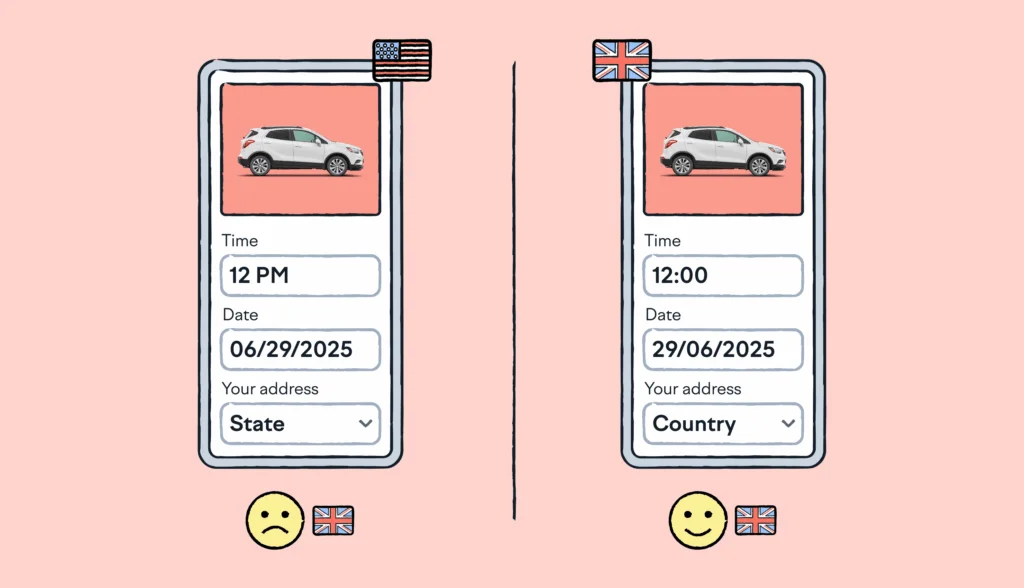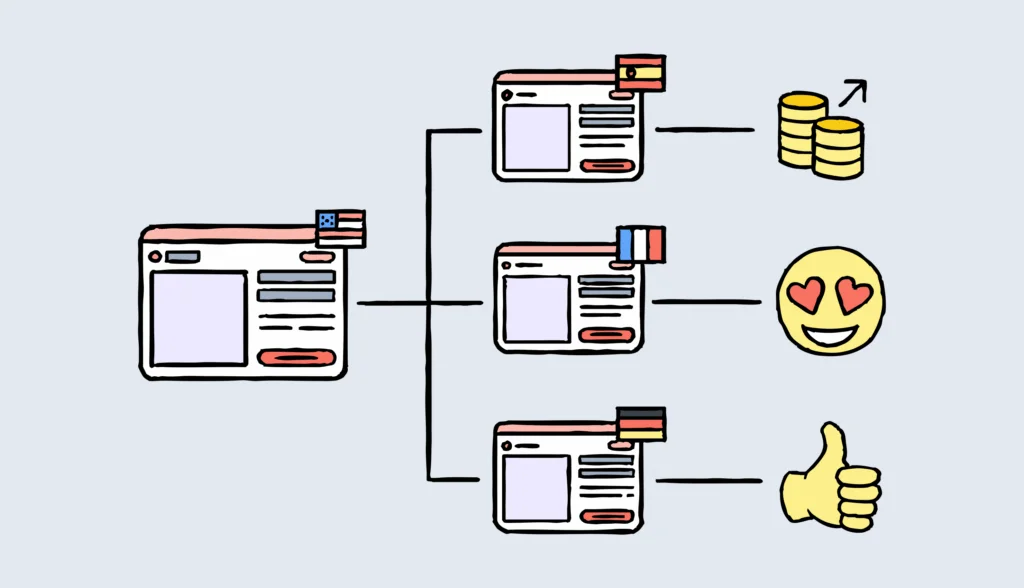Global marketers and businesses enter new markets with the same goal — to connect with international audiences, build brand awareness across different countries, and increase sales.
The most effective way to create that connection is to speak to new markets in their native language while also considering cultural nuances. Failing to do so can lead to embarrassing missteps.
Take, for example, the Iranien company Paxam. Their oversight in localizing their laundry soap’s name resulted in the unfortunate launch of a product named “Barf” in English-speaking markets. “Barf” isn’t exactly an appealing name for a cleaning product.
This is where transcreation comes into play.
What is transcreation?
Transcreation is exactly what it sounds like: it’s a mix of translation, creation, and copywriting. You take an existing piece of content and transform it into something that conveys the same message, but is culturally more relevant to the target market.
With content transcreation, there is less focus on recreating a piece in exactly the same way (letter by letter and word by word). The focus is more on the intent of the piece and how that message will be received in a different market as part of a marketing campaign.
Think of it like creative translation.
Often, copywriters and translators work together on transcreation projects to evoke the right emotions while maintaining a strong brand message.
Transcreation requires a very close feedback loop and communication between the transcreator and the product owner or marketing team, because the transcreation requires understanding of the brand guidelines and the goals of a particular campaign.
Why should you transcreate your content?
It’s simple, really. The more your content resonates with your audience, the more users will take notice of your brand and want to buy from you.
Essentially, by transcreating your content you’ll be able to
- Raise brand awareness
- Connect emotionally with your target audience
- Gain a competitive edge in new markets
- Drive new business
- Increase engagement and conversion rates
- Build brand trust
- Preserve your brand’s voice and message across cultures
- Avoid cultural mishaps that could damage your reputation
- Demonstrate cultural sensitivity and respect
- Adapt to local preferences and buying behaviors
Remember, transcreation makes sure your message not only makes sense but also packs the same punch in a new cultural context. It’s about making your brand feel local, even when you’re going global.
Examples of transcreation
A great example of transcreation isn’t in the marketing world, but from the world of film. Often, when a movie does well in a foreign market, American producers want to create a version that is more relevant to American audiences, as well as audiences in other English-speaking countries.
The horror movie The Ring is a perfect example of this. Based on a Japanese movie called Ringu, the movie is about a videotape that is said to cause the death of anyone who watches it.
At their core, the premise of the movie (the deadly video) is the same, as are a lot of plot points. But the details of the film, names and settings, change to be more relevant to North American audiences.
They swap out Japan for the Pacific Northwest as the setting for the movie, as an example. Despite these changes, the intent is the same: to terrify you. The emotional impact of the film doesn’t change.
Achieving this cultural relevance, without losing the desired emotional outcome, is the goal of transcreation. It mirrors the intent of the source language but is not simply the same text translated into a different target language.
You will find many examples of global brands using transcreation to effectively connect with their target audience.
Think of McDonald’s with their menu to cater to local tastes, Nike adopting their ad campaigns for Asian or Arabic markets, or Ikea transcreating their catalogues – all to better resonate with their customers in a specific market.
Transcreation vs. translation: what is the difference?
What is translation in comparison to transcreation? Check the table below to see the main differences between transcreation and translation.
| Translation | Transcreation |
| Translation is the rendering of meaning from one language into another language. It can involve some degree of creativity, but the translator is still using the source text as the basis (faithful to source), applying the basic adaption required to make sure the text is correct and fluent.
People who offer translation services are usually linguists or subject matter experts with excellent language skills. Translation content can be as diverse as product content, knowledge base articles, technical documentation, user reviews, marketing materials, support messages and much, much more. |
Transcreation is a much more creative process. A high-end creativity is required to perform such tasks. People who provide transcreation services are typically a mix of copywriters, UX writers and linguists. They have the skills to create a new copy based on a creative brief rather than just making a creative variant of translation.
You would expect the transcreated copy to have a strong call to action, super natural flow and a very local feel. Transcreation often starts with a creative brief, similar to what you’d provide a content writer or copywriter in your native language. Normally you would also share your campaign goals with the transcreator, so the copy can be adapted with that in mind. You would typically transcreate web/digital banners, slogans, advertisements, signage. |
Transcreation vs localization: what’s the difference?
Transcreation is a creative process that involves recreating content in a new language while maintaining its original meaning, style, and tone where as localization is a more technical process that involves adapting content to suit the linguistic and cultural preferences of a specific region or market, for example, using the correct date formats for that region.
The importance of a transcreation brief
The transcreation brief would contain the topic idea, guidelines, relevant information about the target audience, links to existing websites, any related brand campaign assets as well as examples of previous copies, if translations have been done before. From there, the transcreator takes this information and creates a new copy around it.
This allows transcreators the freedom they need to do their best work. What ends up happening as a result of this freedom is that you get slightly different messaging for each market that helps form an authentic connection to your target audience (like in the movie example above).
In addition, the writers who are working from the transcreation brief can help you nail local SEO — discovering the relevant keywords and topics for each locale and building the content around their findings for global audiences. As an added bonus, because transcreation involves creating something new, you avoid getting dinged by Google for duplicate content.
When to choose transcreation
So, when should you resort to transcreation?
Translation is helpful when you’re translating less creative content, that requires precise and accurate rendering of the source. It could be knowledgebase articles, your legal documentation, product content, etc.
However, if you’re looking to communicate anything more creative like web banners, slogans, email campaigns or content that has a big business impact (like a landing page or social media graphics), consider using transcreation.
Any business with a global marketing strategy uses the transcreation technique to:
- Connect with the target audience in a more meaningful way
- Increase engagement, conversion rates, sales, and ROI
- Demonstrate a strong market knowledge
- Capture market-specific intent
Transcreation allows you to make a culturally-relevant emotional connection that triggers a specific action, like visiting your website, signing up for a trial, booking a demo, purchasing your product.
Translation, on the other hand, focuses more on the action the messaging is supposed to elicit. There is more emphasis on a specific desired outcome based on textual content rather than layout experience or visuals.
Headlines, taglines, in-app dialogue, alerts, LinkedIn posts, slogans are all perfect candidates for transcreation because, you should consider that the process of crafting a loaded, multiple layer copy in the target languages would require at least as much effort you have invested in creating your original copy.
Transcreation is often most frequently in the following industries:
- Advertising and marketing
- Consumer goods
- Video games
- Literature
- Film and television
Getting started with transcreation in 7 steps
Before you start transcreation, it’s important to go though these steps to make sure your transcreation project is a success.
- Identify your target markets and audiences
Before diving into transcreation, define the markets and audience segments you’re targeting. A good place to start is to look at the markets and audiences your competitors are targeting. You can also use market research tools and demographic data to create detailed audience personas, considering everything from age and income to media habits and cultural quirks. - Define the goals of your transcreation project
Ask yourself what you hope to gain from adapting your content for new audeinces. Is it to make a bigger impact with a marketing campaign? Maybe it’s for brand consistency. Whatever your reason, make it concrete. Establish specific, measurable KPIs such as engagement rates, conversion upticks, brand reach, or incerases in sales in target markets. - Establish brand guidelines for transcreation
Create a transcreation playbook that shows which brand elements are set in stone (like your logo) and which elements can be adapted (e.g., slogans, imagery). This keeps your brand consistent yet allows for some flexibility. - Audit your source content
Not all content is cut out for transcreation. Some content may be too culturally specific or rely heavily on untranslatable wordplay. Run a content health check, categorizing it by how easy it is to transcreate and the impact it could have on our goals. This will help you prioritize content for trancreation. Remeber to flag idioms, cultural references, and humor that may need extra attention. - Calculate costs and timelines
As we mentioned earlier, trancreation requires more time and expertise than translation. Inevitably, this means higher costs. Determine how much you want to invest and set a realistic timeline for each phase of your transcreation project (research, creative work, review processes, and testing). Factor in the volume and complexity of your message, and the number of target markets. Resist the urge to rush – quality transcreation takes time. - Assemble your transcreation team
Put together a team of professionals who have both linguistic and creative writing skills, as well as cultural expertise. This may include translators, native copywriters, and local market experts. Don’t forget to include project managers who can coordinate the transcreation process. Remeber, define clear roles and responsibilities for each team member. - Plan for quality assurance and testing
This is perhaps the most important step. Set up a robust review process to make sure your transcreated content hits the mark. Create a quality assurance checklist covering linguistic accuracy, cultural fit, brand consistency, and emotional impact. Finally, do some A/B testing on a sample of your target audience.
Final thoughts about transcreation
Entering a new foreign market with the same tone of voice that you’re using locally doesn’t always work because different cultures have different expectations of how a brand is supposed to communicate with them.
For example, in the US, using a direct tone is normal, while in Japan, a softer tone is more common. The more direct approach that is common in the US can come across as rude in Japan.
Transcreation is there to help you get the tone of voice right and avoid the risk of turning away a large chunk of the new market.
Want to learn more about how Lokalise can assist in your transcreation workflow? Book a demo with our team, or sign up for a free trial today!






